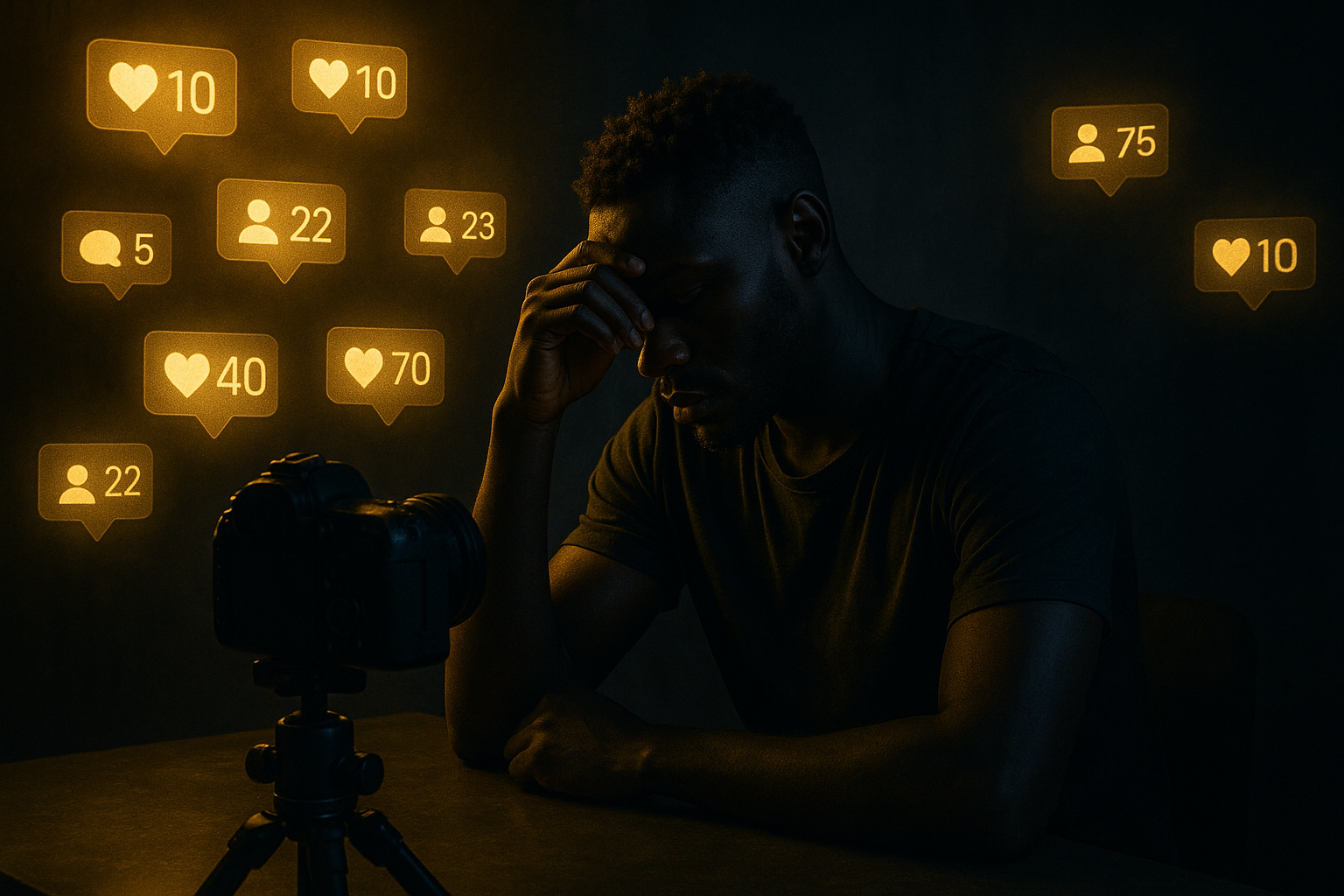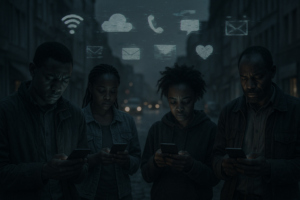In the digital age, going viral represents the ultimate fantasy for businesses and individuals alike. A single post, video, or tweet that reaches millions promises instant recognition, explosive growth, and unprecedented opportunity. Yet behind every viral success story lies a complex reality that rarely makes headlines. For business owners, startups, and entrepreneurs, understanding the true cost of viral fame isn’t just educational—it’s essential for survival in the attention economy.
The Allure and Illusion of Instant Success
Viral content creates an intoxicating narrative of overnight success. A small bakery’s cake video reaches 50 million views. A handmade jewelry post generates thousands of orders in hours. A startup‘s clever tweet brings venture capital interest flooding in. These stories dominate social media feeds and business news, creating a powerful mythology around viral moments.
What these headlines omit are the aftermath stories: the bakery owner who couldn’t sleep for weeks managing overwhelming demand, the jewelry maker who faced a year-long backlog and angry customers, the startup founder who learned that attention doesn’t equal sustainable business growth. Viral success often resembles winning the lottery—transformative for some, devastating for others, and rarely the result of careful planning.
The psychological appeal of virality stems from our deep-seated desire for validation and recognition. When content goes viral, it triggers dopamine responses similar to gambling wins, creating addictive cycles where businesses chase the next viral moment rather than building sustainable growth strategies. This pursuit carries costs that extend far beyond marketing budgets, affecting mental health, business operations, brand reputation, and long-term viability.
When Viral Success Becomes Operational Nightmare
Consider the case of a small soap company in Nashville that gained viral attention when a celebrity shared their product with 15 million followers. Within 48 hours, the company received over 50,000 orders—more than they typically processed in an entire year. What seemed like a dream scenario quickly became a logistical catastrophe.
The business owner faced impossible choices. Should they hire temporary staff immediately, risking quality control issues? Should they pause orders and disappoint excited customers? Should they maintain current production rates and accept 6-month delivery times? Each option carried significant risks. They chose to scale up rapidly, hiring 20 new employees, leasing additional warehouse space, and purchasing equipment on credit.
The financial pressure was immense. While orders flooded in, the company had to purchase raw materials in unprecedented quantities, meet expanded payroll obligations, and manage increased overhead before revenue materialized. Cash flow became critical. The business owner maxed out credit cards, took emergency loans, and deferred personal expenses to keep operations running.
Quality control suffered despite best efforts. With inexperienced staff and rushed production, defect rates increased from less than 1% to nearly 15%. Customer complaints multiplied. Negative reviews began appearing. The very customers who had been excited by the viral moment now felt disappointed by the execution. The brand that had built its reputation on quality and attention to detail saw that reputation crumble under the weight of unsustainable demand.
Six months later, when the viral wave subsided, the company faced new challenges. They had expanded overhead based on temporary demand. The warehouse lease had three years remaining. Specialized equipment sat underutilized. Staff hired during the surge required retention or severance. The business found itself in worse financial position than before going viral, having sacrificed long-term stability for short-term hype.
The Mental Health Toll of Sudden Visibility
Viral fame carries profound psychological costs that business owners rarely anticipate. The sudden shift from obscurity to intense public scrutiny creates stress levels comparable to those experienced by emergency responders or healthcare workers during crises. This isn’t hyperbole—multiple studies document the severe mental health impacts of rapid viral attention.
A software developer who created a viral productivity app described the experience as “drowning in attention.” His inbox filled with thousands of emails daily. Social media notifications became overwhelming. Sleep patterns deteriorated as he compulsively checked metrics and responded to comments. The constant pressure to maintain relevance, produce follow-up content, and meet heightened expectations led to severe anxiety and eventual burnout.
The phenomenon of “viral trauma” has emerged as a recognized psychological condition. Individuals and businesses thrust into sudden fame experience symptoms including anxiety, depression, panic attacks, insomnia, and dissociation. The pressure to perform, respond, and maintain the momentum feels relentless. Many describe feeling trapped by their own success, unable to step back without disappointing audiences or losing hard-won attention.
For business owners, this stress compounds with operational pressures. They must simultaneously manage exploding demand, maintain quality, lead stressed teams, make critical strategic decisions, and maintain public presence—all while processing the psychological impact of sudden transformation. Many report feeling completely unprepared for the emotional demands of viral success, having focused exclusively on the operational and financial aspects.
The isolation that accompanies viral fame surprises many. Friends and family often can’t relate to the experience. Peer business owners may exhibit jealousy or dismissiveness. Professional advisors lack relevant experience. This isolation intensifies stress and makes seeking support difficult. Business owners describe feeling profoundly alone despite having millions of people aware of their brand.
The Privacy Paradox: When Personal Life Becomes Public Domain
Going viral eliminates boundaries between professional and personal life in ways that catch individuals and businesses off guard. The internet’s investigative capabilities mean that within hours of achieving viral status, determined individuals can uncover addresses, family information, past statements, and personal history. This exposure creates vulnerability that extends beyond the business to affect families, employees, and personal relationships.
A restaurant owner whose establishment went viral for a unique menu item found herself facing unexpected consequences. Internet users discovered her home address and began appearing at her house to take photos. Her children’s school information circulated online, requiring security consultations. Old social media posts from years earlier were excavated and scrutinized, with innocuous comments reinterpreted through contemporary lenses.
The loss of anonymity proves particularly challenging for small business owners who valued privacy. Suddenly, every public appearance, social media post, and personal choice becomes subject to public commentary and judgment. Some viral business owners report developing anxiety about simple activities like grocery shopping or attending children’s school events, fearing recognition and unwanted interactions.
Employee privacy suffers similarly. Staff members appearing in viral content often find themselves thrust into unwanted spotlight. Their personal social media accounts attract attention. Past statements get scrutinized. Some face harassment or stalking from individuals fixated on the viral content. Businesses must navigate their responsibility to protect employee privacy while managing public interest.
The permanence of internet content compounds these privacy concerns. Viral moments never truly fade. Years later, internet users continue discovering and resharing the content. For businesses and individuals attempting to move forward or rebrand, viral content from the past continues surfacing, making it difficult to control narrative or evolve identity.
Financial Realities: The Economics of Viral Attention
The economics of viral success rarely align with popular perceptions. While viral content generates massive attention, converting that attention into sustainable revenue presents enormous challenges. The gap between visibility and profitability often surprises business owners who assume that millions of views naturally translate to proportional financial gain.
A content creator whose video achieved 100 million views across various platforms earned approximately $30,000 from ad revenue and platform payments—far less than the perceived value of such massive reach. When accounting for production costs, opportunity costs, and taxes, the net financial benefit proved modest. More significantly, follow-up content received fraction of the original views, making the viral moment a financial anomaly rather than a repeatable success.
For product-based businesses, viral attention often creates financial strain before generating profit. Inventory must be purchased or produced before orders arrive. Manufacturing requires upfront capital. Shipping and fulfillment incur immediate costs. Payment processing fees reduce revenue. Customer service demands investment in staff and systems. By the time revenue actually reaches business bank accounts, significant capital has been expended.
The “viral tax” represents another hidden cost. Platforms, payment processors, and service providers extract their share of viral success. Payment processing fees on thousands of small transactions accumulate quickly. Platform fees for marketplace sales reduce margins. Shipping costs during peak demand often increase. Rush production carries premium pricing. These costs can consume 30-50% of gross revenue, leaving far less actual profit than headline numbers suggest.
Opportunity costs represent perhaps the most significant hidden expense. Time spent managing viral aftermath can’t be invested in strategic planning, product development, or relationship building. Business owners become reactive rather than proactive, responding to immediate crises rather than building long-term value. Many viral businesses report that the distraction of managing sudden fame delayed critical strategic initiatives by months or years.
The Dark Side: Harassment, Criticism, and Cancel Culture
Viral attention inevitably attracts negative attention alongside positive engagement. The same mechanisms that spread praise and admiration also amplify criticism, harassment, and coordinated attacks. For business owners unprepared for this reality, the experience can be traumatic and business-threatening.
A small fashion brand that went viral for size-inclusive designs found themselves targeted by coordinated harassment campaigns. The business owner received death threats. Her social media filled with abusive comments. Fake negative reviews flooded Google and Yelp. Competitors impersonated her brand to confuse customers. The attacks intensified when attempts to address them were interpreted as defensive or insufficiently apologetic.
Cancel culture represents a particular risk for viral businesses. Modern audiences apply contemporary standards to past actions, statements, and associations. Content or positions that were acceptable or unremarkable years earlier can become grounds for public condemnation when excavated during viral attention. The speed and intensity of online outrage can destroy reputations and businesses within days.
The permanence and proliferation of criticism creates lasting damage. Negative content ranks highly in search results, affecting how potential customers discover the business. Coordinated review bombing drops ratings and visibility on platforms. Misinformation spreads faster than corrections, creating narratives that persist despite being factually incorrect. Rebuilding reputation after viral controversy requires years of consistent effort and significant resources.
For business owners, the psychological impact of sustained criticism and harassment can be devastating. Many report symptoms of PTSD, severe anxiety, and depression. Some require therapy or medication to manage the psychological toll. In extreme cases, business owners abandon their ventures entirely, unable to tolerate the ongoing negativity and threat environment.
Relationship Casualties: How Viral Fame Affects Personal and Professional Bonds
The strain of viral success extends beyond individual business owners to affect relationships with partners, family, employees, and professional networks. The sudden transformation in circumstances, priorities, and pressures tests relationships in unexpected ways, often resulting in painful casualties that outlast the viral moment itself.
Business partnerships frequently fracture under viral pressure. When attention and opportunity arrive suddenly, disagreements over strategy, equity distribution, and decision-making authority intensify. Partners who worked harmoniously during slow growth find themselves in conflict over rapid scaling decisions. The stress and exhaustion of managing viral aftermath reduce patience and increase tensions. Many partnerships that survived years of struggle dissolve within months of achieving viral success.
Family relationships suffer from both time demands and psychological strain. Business owners managing viral attention report working 80-100 hour weeks for extended periods. Family meals, children’s activities, and partner time get sacrificed to operational demands. Spouses and children feel neglected and resentful. The stress and anxiety the business owner experiences affects household dynamics. Some marriages and family relationships never recover from the period of viral intensity.
Employee relationships transform in complex ways. Existing staff feel overwhelmed by increased demands and changing workplace dynamics. Rapid hiring introduces cultural disruption. The business owner’s stress and distraction affects leadership quality. Employees who felt valued in the pre-viral environment sometimes feel lost in the chaos of scaling. Turnover increases precisely when stability and experience matter most.
Professional networks can become sources of unexpected tension. Fellow business owners may express jealousy or minimize viral success as “luck” rather than skill. Industry peers may become competitors seeking to capitalize on similar attention. Mentors and advisors sometimes struggle to provide relevant guidance for situations outside their experience. The isolation business owners feel often includes a sense that their professional community can’t or won’t understand their unique circumstances.
Infrastructure Collapse: When Systems Can’t Scale
Every business operates on infrastructure designed for specific capacity levels. Websites handle certain traffic volumes. Inventory systems track particular order quantities. Customer service processes manage expected inquiry volumes. Payment processing accommodates normal transaction flows. Shipping logistics serve standard fulfillment rates. When viral attention arrives, this infrastructure often fails catastrophically.
An e-commerce startup that went viral during holiday season watched their website crash within hours of gaining attention. Traffic exceeded server capacity by 100-fold. Their hosting provider’s emergency scaling solutions proved insufficient. The business remained largely inaccessible during peak viral attention, losing an estimated 70% of potential sales. By the time infrastructure stabilized, the viral moment had passed, and traffic had returned to normal levels.
Inventory management systems designed for hundreds of daily orders collapse under thousands. Tracking becomes unreliable. Stock counts become inaccurate. Fulfillment prioritization fails. Orders get lost, duplicated, or incorrectly shipped. The resulting chaos creates customer service nightmares that compound operational problems with reputation damage.
Payment processing infrastructure often includes fraud detection and velocity limits designed to protect both businesses and customers. Viral order surges trigger these protections, resulting in legitimate orders being declined or held for review. Some businesses find their payment processor accounts frozen due to unusual activity patterns, preventing them from accepting any orders until manual review occurs—a process that can take days or weeks.
Customer service infrastructure rarely scales effectively during viral moments. Inquiry volumes overwhelm existing staff and systems. Response times stretch from hours to days or weeks. Customers become frustrated and angry. Negative sentiment spreads. The business owner faces impossible choices about resource allocation, often sacrificing product quality or operational efficiency to maintain customer communication.
Brand Identity Crisis: Losing Control of Your Narrative
Going viral means surrendering control of brand narrative to public interpretation. The aspects of business that resonate with audiences may differ dramatically from what the business owner intended to emphasize. This misalignment creates identity crises as businesses struggle to reconcile their vision with public perception.
A woodworking business went viral for a clever video showcasing a unique joinery technique. Suddenly, they were known exclusively for that one method, despite offering diverse products and services. Customers expected every piece to feature the viral technique. Requests for custom work specified the technique even when inappropriate. The business owner felt trapped by success, unable to showcase the full range of skills and creativity that had always defined the craft.
The simplification inherent in viral content reduces complex businesses to single memorable elements. Nuance disappears. Subtlety vanishes. Context gets lost. The business becomes defined by the viral moment rather than by comprehensive offerings, values, or vision. Attempts to expand or evolve the narrative meet resistance from audiences invested in the simplified version.
Misinterpretation creates additional challenges. Viral content spreads without context, leading audiences to draw conclusions that don’t align with business reality. A restaurant’s viral dish gets interpreted as their signature item despite being a limited special. A sarcastic tweet gets taken literally. A heartfelt message gets received as cynical marketing. Correcting misinterpretations proves nearly impossible once narratives solidify.
The pressure to maintain consistency with viral identity conflicts with business evolution needs. Markets change, opportunities emerge, and strategies adapt. However, audiences resist change in businesses they discovered through viral moments. They want repetition of the original experience. Innovation gets interpreted as abandonment of what made the business special, creating tension between growth needs and audience expectations.
The Pressure to Repeat: Chasing the Dragon of Virality
Perhaps the most insidious cost of going viral is the psychological and strategic trap of attempting to recreate the experience. Having tasted viral success, businesses and individuals often become fixated on achieving it again, diverting resources and attention from sustainable growth strategies to increasingly desperate attempts at viral lightning strike repetition.
This phenomenon resembles addiction patterns. The dopamine rush of viral success creates craving for repetition. Subsequent content that doesn’t achieve similar reach feels disappointing despite potentially representing objectively good performance. Business owners report feeling like failures when excellent content generates “only” tens of thousands rather than millions of engagements.
Strategy distortion follows as businesses orient operations around viral potential rather than customer value. Content decisions prioritize shareability over substance. Product development emphasizes novelty over quality. Marketing focuses on attention grabbing over relationship building. The business loses its core identity in pursuit of the next viral moment, often alienating loyal customers who valued original offerings.
Resource allocation suffers as disproportionate investment flows toward viral attempts. Marketing budgets concentrate on social media and content production at the expense of fundamentals like customer service, product quality, or operational efficiency. Time gets consumed by content creation rather than business building. Capital flows to viral pursuit rather than strategic growth initiatives.
The irony of viral pursuit is that desperation shows. Audiences detect inauthenticity and forced attempts at viral content. The very effort to replicate viral success often ensures its failure. Authentic viral moments arise from genuine creativity, unexpected value, or perfect timing—elements difficult or impossible to manufacture deliberately.
Strategic Alternatives: Building Sustainable Growth Without Viral Dependence
Smart business owners recognize that sustainable growth rarely depends on viral moments. Instead, they focus on fundamentals that create consistent value, loyal customers, and healthy margins. These strategies lack viral excitement but produce reliable results that compound over time.
Community building represents perhaps the most powerful alternative to viral pursuit. Businesses that invest in genuine relationships with customers create advocates who provide steady revenue, valuable feedback, and organic word-of-mouth promotion. A devoted community of 1,000 customers often generates more sustainable value than a viral audience of one million casual viewers.
Content marketing focused on utility rather than virality builds authority and trust over time. Educational content that solves real problems attracts qualified audiences actively seeking solutions. This content continues generating value years after publication, unlike viral content that spikes and disappears. Search optimization ensures ongoing discovery without dependence on platform algorithms or viral dynamics.
Product excellence and customer experience create sustainable competitive advantages that viral attention cannot replicate. Businesses known for exceptional quality or service develop reputations that transcend individual marketing moments. Customers become loyal advocates. Premium pricing becomes justified. Competition struggles to replicate the accumulated expertise and refinement that time enables.
Strategic partnerships and collaborations provide growth opportunities without viral risk. Complementary businesses can cross-promote, share audiences, and create mutual value. These relationships develop gradually, allowing infrastructure and systems to scale appropriately. The growth feels manageable rather than overwhelming.
Email marketing delivers consistently higher ROI than social media for most businesses, yet receives less attention because it lacks viral potential. Building an email list of engaged subscribers creates a direct communication channel immune to algorithm changes or platform volatility. The relationship deepens over time, increasing customer lifetime value systematically.
Preparing for Virality: If It Happens Despite Your Strategy
While pursuing viral success often proves counterproductive, businesses should prepare for viral attention in case opportunity or accident brings it. Preparation mitigates many costs and risks, allowing businesses to capitalize on attention without sacrificing long-term stability.
Infrastructure planning should anticipate traffic and order volume spikes well beyond normal capacity. Cloud hosting with automatic scaling prevents website crashes. Inventory buffer stocks enable rapid fulfillment. Customer service protocols for high-volume periods ensure maintained response quality. Payment processing redundancy prevents single point failures.
Crisis communication plans outline response procedures for negative attention or controversy. Designated spokespersons receive media training. Message frameworks address common criticism categories. Legal counsel reviews policies and procedures. Social media management includes protocols for harassment and coordinated attacks.
Financial reserves provide crucial buffers during viral moments. Emergency capital funds rapid inventory purchases, temporary staff hiring, or infrastructure upgrades without requiring high-interest loans or equity dilution. Conservative debt levels ensure borrowing capacity remains available if needed.
Team preparation ensures staff understand potential scenarios and response procedures. Training addresses stress management, customer communication, and operational contingencies. Psychological support resources remain accessible. Clear escalation paths prevent decision bottlenecks during critical moments.
Exit strategies outline how the business will transition from viral attention back to normal operations. Decisions about whether to maintain increased scale or return to previous size can be made deliberately rather than reactively. Financial modeling explores both expansion and contraction scenarios, revealing optimal paths forward.
Learning from Others: Case Studies in Viral Aftermath
Examining diverse viral experiences reveals patterns that inform better decision-making. Some businesses navigate viral attention successfully, while others struggle or fail entirely. Understanding these outcomes provides valuable lessons for business owners facing similar circumstances.
The “Potato Salad Kickstarter” became internet legend when a joke campaign raised over $55,000 for a man to make potato salad. Rather than attempting to build a business around the viral moment, the creator recognized it as an anomaly, fulfilled the ridiculous promise with a public event, donated remaining funds to charity, and moved on with his life. His realistic assessment of viral opportunity prevented the trap of false business expectations.
Conversely, many viral businesses attempt to build empires on momentary attention. They raise capital, expand rapidly, hire aggressively, and spend lavishly—only to discover that viral audiences don’t convert to loyal customers. When attention fades, they’re left with overhead, debt, and expectations they cannot sustain. The graveyard of failed viral businesses contains companies that mistook temporary attention for permanent demand.
Dollar Shave Club represents rare successful transition from viral video to sustainable business. However, their success wasn’t simply viral attention—it was strong product-market fit, effective operations, and years of execution after the initial video. The viral moment opened doors, but building a billion-dollar company required traditional business fundamentals.
Conclusion: Rethinking Success in the Attention Economy
The true cost of going viral extends far beyond what viral success stories reveal. Behind the headlines of overnight success lie stories of stress, sacrifice, relationship damage, financial strain, and profound personal cost. For every business that successfully navigates viral attention, many more struggle with consequences that outweigh benefits.
This reality doesn’t mean businesses should avoid visibility or growth opportunities. Rather, it suggests that chasing viral success as a primary strategy often proves counterproductive and dangerous. Sustainable business growth emerges from fundamentals: exceptional products, excellent service, genuine relationships, consistent execution, and strategic patience.
Viral moments can accelerate growth for businesses with strong foundations. However, without that foundation, viral attention becomes destructive rather than beneficial. The businesses that thrive in the attention economy recognize that visibility serves strategy rather than defining it. They build deliberately, scale sustainably, and view viral potential as occasional opportunity rather than central objective.
For business owners and entrepreneurs, the lesson is clear: invest in fundamentals before pursuing fame. Create infrastructure that can scale. Build financial reserves. Develop operational excellence. Cultivate loyal communities. Establish sustainable growth mechanisms. Then, if viral attention arrives, you’re positioned to benefit rather than merely survive it.
The most successful businesses rarely depend on viral moments. They grow steadily, compound value consistently, and build lasting enterprises that transcend individual attention spikes. They recognize that true success measures in customer relationships, sustainable revenue, and long-term value creation rather than view counts or follower numbers.
In the end, the true cost of going viral reveals itself not in the moment of attention but in the years that follow. Those who pursue virality as strategy often find themselves stuck, unable to replicate the moment or build beyond it. Those who focus on fundamentals occasionally experience viral acceleration but never depend on it. The difference determines which businesses still exist five years later and which became cautionary tales of attention economy excess.
References
- Aral, S., & Dhillon, P.S. (2022). “Digital Payback: The Hidden Costs and Unintended Consequences of Social Media.” MIT Sloan Management Review, 63(3), 1-8.
- Bakker, P. (2023). “When Fifteen Minutes of Fame Becomes a Lifetime Sentence: The Long-Term Psychological Impact of Viral Content.” Cyberpsychology, Behavior, and Social Networking, 26(4), 287-295.
- Chen, Y., & Xie, J. (2021). “The Economics of Going Viral: Conversion, Retention, and Profitability.” Journal of Interactive Marketing, 56, 1-16.
- Duffy, B.E., & Chan, N.K. (2022). “‘You Never Really Know Who’s Looking’: Imagined Surveillance Across Social Media Platforms.” New Media & Society, 24(6), 1369-1385.
- Hoffman, A.L., & Lutz, C. (2021). “The Privacy Paradox in the Age of Virality.” Social Media + Society, 7(2), 1-14.
- Kim, J.W. (2023). “Viral Burnout: Understanding Mental Health Challenges in the Attention Economy.” Journal of Business Ethics, 182(4), 891-908.
- Marwick, A.E., & boyd, d. (2021). “Understanding Privacy at the Margins.” International Journal of Communication, 15, 1157-1165.
- Senft, T.M., & Baym, N.K. (2020). “What Does the Selfie Say? Investigating a Global Phenomenon.” International Journal of Communication, 9, 1588-1606.
- Thompson, D. (2023). “The Virality Trap: Why Chasing Internet Fame Often Backfires.” Harvard Business Review Digital Articles, 2-8.
- Zulli, D., & Zulli, D.J. (2022). “Extending the Internet Meme: Conceptualizing Technological Mimesis and Imitation Publics on the TikTok Platform.” New Media & Society, 24(8), 1872-1890.
Additional Resources
- Harvard Business Review – Digital Strategy: https://hbr.org/topic/digital-strategy – In-depth analysis of digital business strategy including viral marketing risks and alternatives
- Forbes Small Business: https://www.forbes.com/small-business/ – Real stories and practical advice for small business owners navigating digital growth challenges
- Small Business Administration (SBA): https://www.sba.gov/business-guide/grow-your-business/market-your-business – Government resources for sustainable business growth strategies
- Entrepreneur Magazine: https://www.entrepreneur.com/topic/social-media-marketing – Articles on social media strategy, viral marketing, and business fundamentals
- Inc. Magazine’s Growth Section: https://www.inc.com/growth – Case studies and analysis of business scaling challenges and solutions
- Social Media Examiner: https://www.socialmediaexaminer.com – Comprehensive social media marketing education with realistic expectations and strategies
- National Federation of Independent Business (NFIB): https://www.nfib.com – Resources and advocacy for small business owners including risk management and growth strategies
- TechCrunch Startups: https://techcrunch.com/category/startups/ – Technology startup news including viral success stories and failures with detailed analysis




